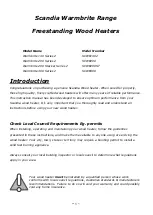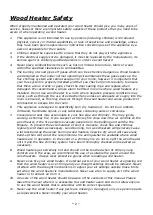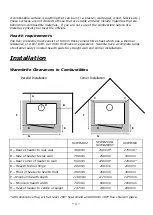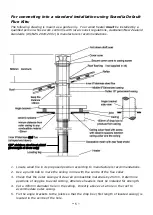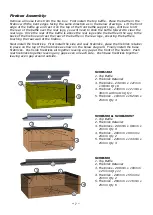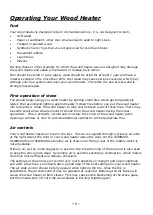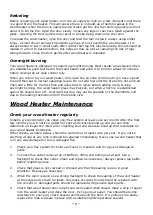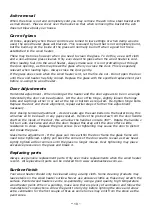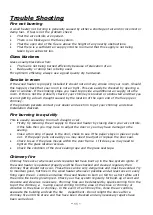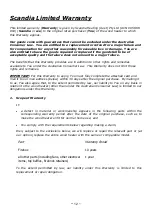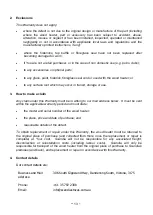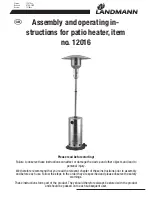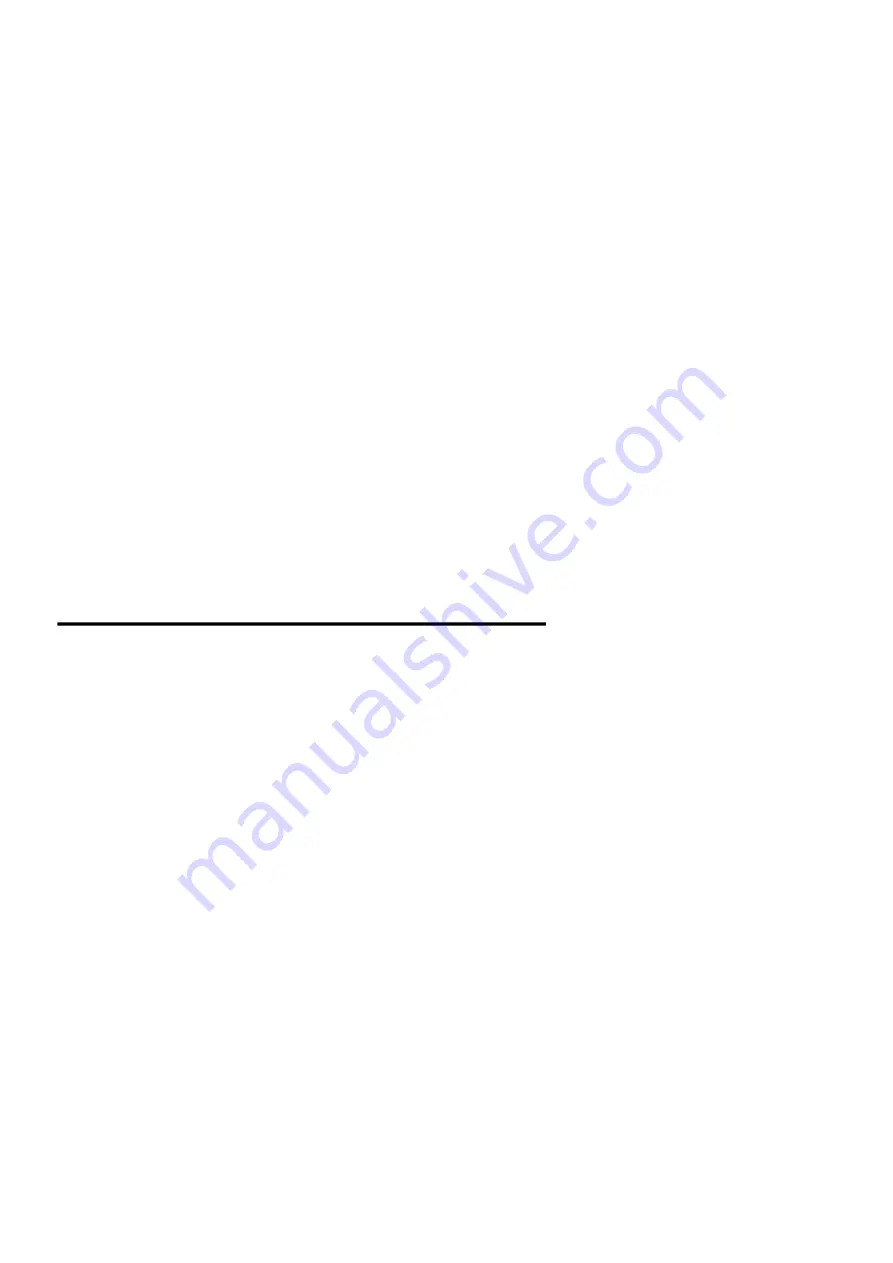
~
9 ~
Refueling
Before refueling your wood heater, turn the air supply to high for a few moments until there
is a good fire in the heater. This will ensure there is no build-up of harmful gases in the
wood heater when the door is opened and will also get the new fuel burning quickly and not
allow it to kill the fire. Open the door slowly in case any logs or coal have fallen against the
glass. Opening the door quickly may result in smoke being drawn into the room.
To reload the wood heater, open the door and feed the fuel in slowly always using either
tongs, a small shovel along with protective gloves. Do not overfill the wood heater. It is
always better to put in small loads often rather than big fills less frequently. Wood should be
loaded in a front to back direction, this helps air flow as well as reducing the risk of logs
falling forward. Close the door gently after wood heater is reloaded.
Overnight burning
Your wood heater is designed to support overnight burning. Best results are achieved when
you establish a good fuel bed in the wood heater and allow it to burn for about 30 minutes
before closing the air slide control fully.
When you return to your wood heater, fully open the air slide control until you have a good
fire and then set to normal operating levels. Do not add fuel until the fire bed is hot and red.
Then add a little for the first time and allow that to ignite before adding more. During
overnight burning, the wood heater glass may blacken, but when a hot fire is established
again this should burn off. Overnight burning may not be possible on the Warmbrite 140
due to the loading restrictions from the firebox size.
Wood Heater Maintenance
Check your wood heater regularly
Initially, we recommend you check your flue system at least once per month. After the first
few months you will notice a pattern of soot and creosote build up and you can then
determine an inspection interval for checking soot and creosote build up that is suitable for
your wood heater installation.
Other checks, as listed below, should be carried out at least twice per year. If you notice
anything wrong at any time it should be repaired immediately. Never use a wood heater that
is in any way damaged or has a damaged flue.
1.
Check your flue system for build up of soot or creosote and for signs of damage to
joints.
2.
To check flue outlet remove top of baffle by lifting and pulling out at end. Use a
flashlight to check flue outlet. Clean and repair as necessary. Always replace top baffle
before relighting stove.
2.
Check that glass is not cracked or chipped and that the sealing rope is in good
condition. Replace as necessary.
3.
When the room is dark, use a strong flashlight to check the sealing of the wood heater
at the edge and corners for leaks. Any leaks or cracks found should be repaired with
fire cement or damaged parts should be replaced with genuine spare parts.
4.
Check that wood heater door is tight and well sealed when closed. Place a strip of paper
into the wood heater and close the door, try to pull out paper. You should feel some
resistance to your pull, check several points around the door. If it pulls out too easily,
replace the rope and seal in place with a suitable high temperature sealant.

